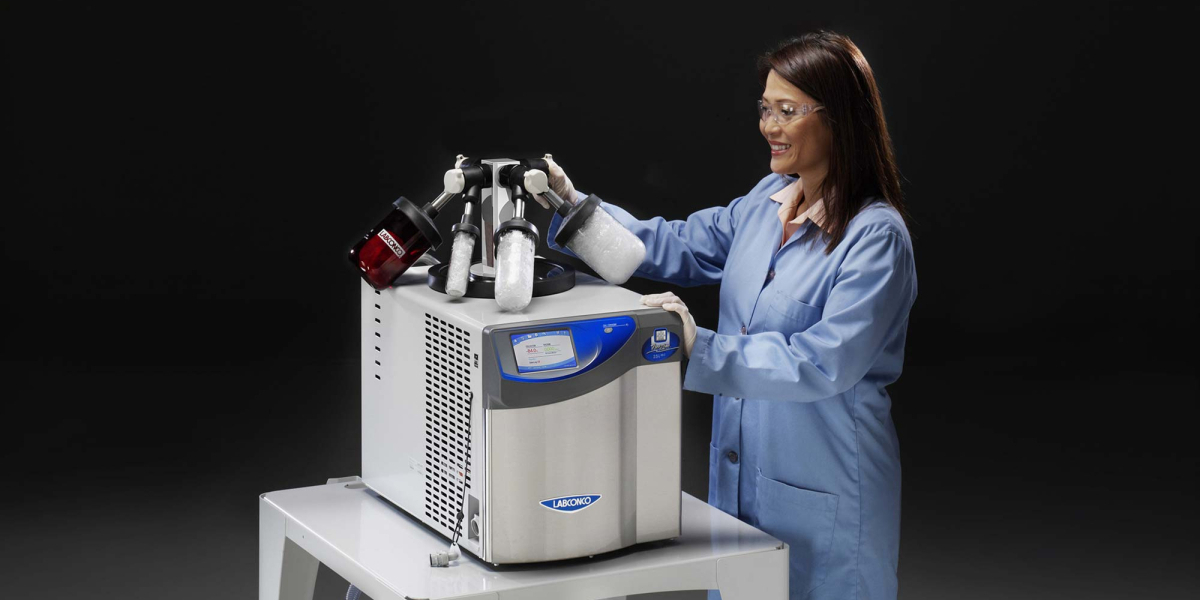Special considerations for freeze drying with DMSO

Dimethyl sulfoxide (DMSO) has become popular in the laboratory because of its ability to dissolve both polar and non-polar compounds. It’s miscible in a wide range of organic solvents as well as water. DMSO also has the ability to dissolve many kinds of compounds and it’s non-toxic.
Dissolved in water, DMSO has an incredibly high freezing point (just below room temperature), which makes it a good candidate for freeze drying. If DMSO is dissolved in a solvent, remove the solvent with an evaporator before lyophilizing.
When lyophilizing samples containing DMSO there are a few things that need to be taken into consideration.
Chemical compatibility
DMSO quickly affects acrylic components which are used in most lyophilizers’ lids and doors. A glass lid and stainless steel chamber are more resistant to the effects of DMSO. DMSO also affects rubber components, such as O-rings and gaskets that keep the freeze dryer vacuum tight. Finally, the plastic and rubber components of the ports and valves can be affected. Rubber O-rings and plastic parts that are compromised need to be replaced immediately. Vacuum pump oil should be hot before the sample is added to the freeze dryer and regular oil changes are recommended to prevent damage to the pump.
Vapor pressure
Since the vapor pressure of water at 25 degrees C is 23.8 mm Hg and the vapor pressure of DMSO at 25 degrees C is 0.600 mm Hg, a deep vacuum and limited heat input are required to keep the sample from melting.
DMSO can be lyophilized but caution must be taken. It can have an odor similar to garlic that can potentially exhaust through the vacuum pump. If the odor becomes a nuisance, vent the pump into a fume hood to control vapors in the lab.
Contact one of our application specialists for help with your freeze drying process.
| chevron_left | On the Origin of BSCs: The Evolution of Human Inclination Design | Articles | Planning a crime lab with multiple evidence drying cabinets | chevron_right |






